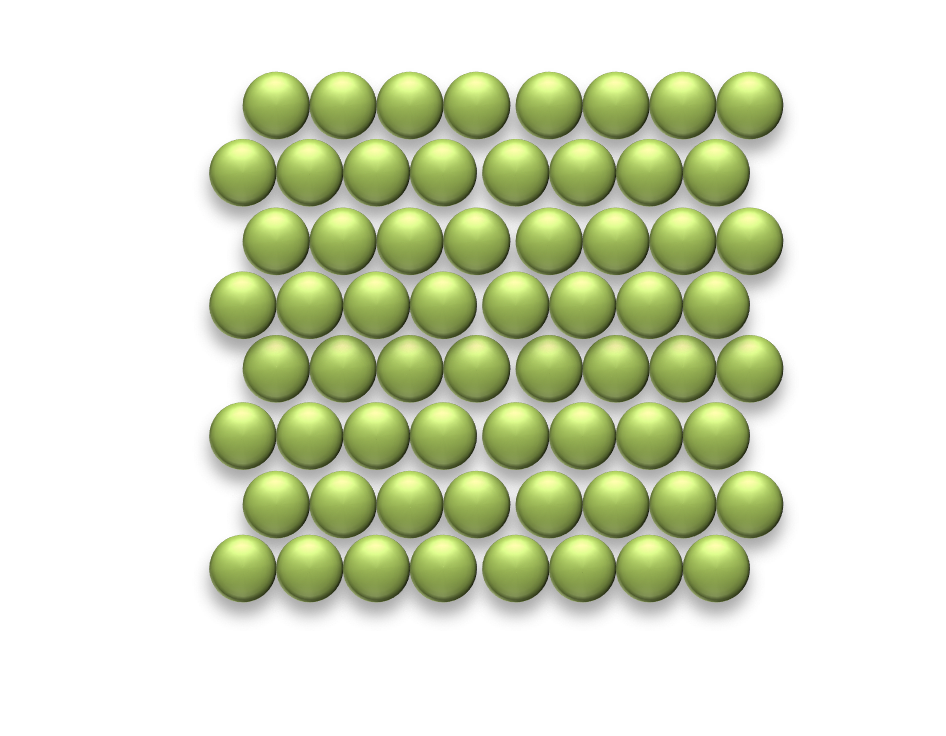Amorphous Metals
What are amorphous metals?
Amorphous metals are produced from special alloys by rapid quenching. During this process, the metallic melt is supercooled, and the disordered (amorphous) atomic structure of the melt is frozen in.
This structure, which is unique for a metal and differs significantly from the periodic crystal structure of conventional alloys, is virtually defect-free and results in unprecedented properties. A similar structure is found in oxide glasses or thermoplastics, which is why amorphous metals are often referred to as metallic glasses.

Amorphe Metalle – ungeordnete Struktur

Herkömmliche Metalle – kristalline Struktur
Why are amorphous metals special?
Immediately after casting, amorphous metals have mechanical properties that exceed the ones of steels or titanium alloys.
They have a higher yield strength and hardness than steels and at the same time an elasticity that could previously only be achieved by polymers.
Furthermore, amorphous metals show an extraordinary corrosion resistance that exceeds that of stainless steels. This allows the use in extreme environments and in the field of medical technology due to the proven biocompatibility.
Amorphous metals / metallic glasses briefly explained...
Which Amorphous Alloys are available?
There is not only one amorphous metal but different amorphous alloys. These are special compositions which must be synthesized very precisely.
Due to our know-how in the field of alloy development and processing technology, we can process a broad alloy portfolio and thus select the alloys according to the application requirements.
Our standard alloys are:
-
Technical alloys: Zirconium, titanium, copper and nickel alloys
-
Precious metal alloys: Palladium and platinum alloys
